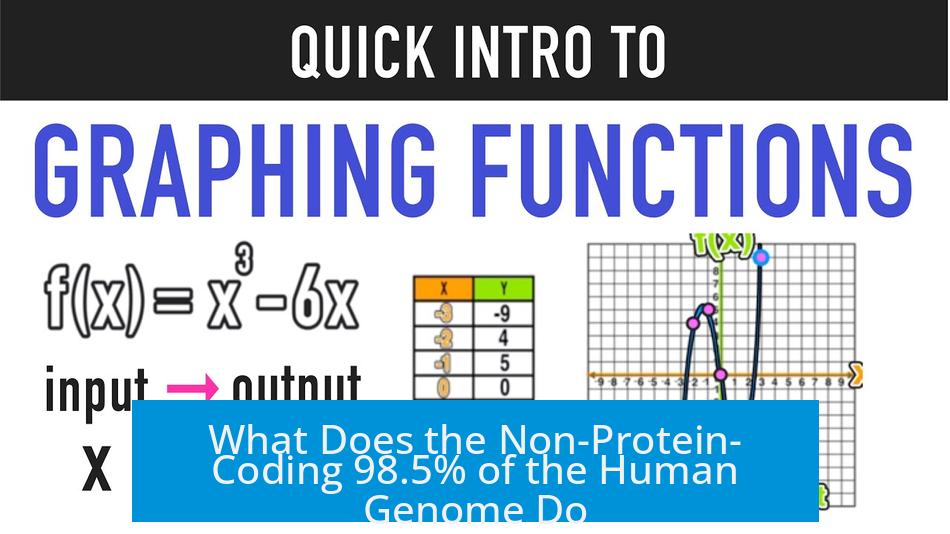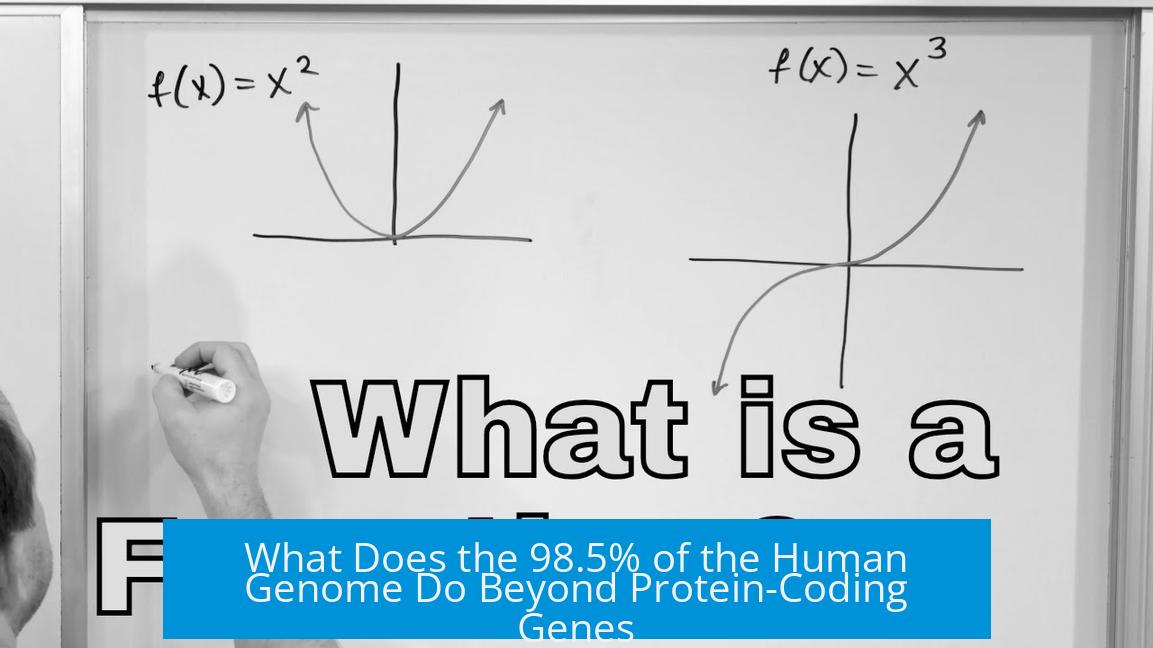What Does the Non-Protein-Coding 98.5% of the Human Genome Do?

Protein-coding regions of the human genome account for only about 1.5% of the total. The remaining 98.5% includes various elements that perform crucial roles beyond coding for proteins. These include repetitive sequences, noncoding RNA genes, regulatory elements that control gene activity, and other DNA segments with functions still being explored by scientists.
Composition of the Non-Protein-Coding Genome
Repeat Sequences Make Up About Half the Genome
Nearly 50% of the human genome consists of repeat sequences. These were once thought to be “junk,” but evidence now shows they hold important clues about human evolution and genome function.
- Transposon-derived repeats form about 45% of the genome. These are genetic elements capable of moving within the genome and have contributed to the origin of some genes.
- LINEs (Long Interspersed Nuclear Elements) represent almost half of these transposons. They are roughly 6,000 base pairs long and have open reading frames, which means they can potentially be translated into proteins.
- Other repeat types include SINEs, LTR retrotransposons, and DNA transposons—all with diverse origins and functions.
- A very small portion of repeats compose centromeres and telomeres. These are essential for chromosome stability and replication.
Noncoding RNA Genes Comprise a Small Yet Vital Part
Protein-coding genes represent a minority of the total genes. Many genes instead code for noncoding RNAs (ncRNAs), which do not translate into proteins but perform essential tasks.
- tRNAs (transfer RNAs) help translate messenger RNA into proteins by delivering amino acids during protein synthesis.
- rRNAs (ribosomal RNAs) form a core part of ribosomes, the cellular “machines” that build proteins.
- Small nucleolar RNAs (snoRNAs) modify other RNAs by chemical changes within the nucleolus.
- Small nuclear RNAs (snRNAs) are crucial components of the spliceosome, responsible for editing RNA transcripts.
- Many lncRNAs (long noncoding RNAs) exist, but their functions are still under investigation.
Functional Roles of Non-Protein-Coding DNA
Gene Expression Regulation
Noncoding DNA plays a major role in regulating when, where, and how proteins get made.
- Elements like promoters initiate transcription of genes.
- Enhancers boost the efficiency of gene transcription, often from distant genomic locations.
- Introns, noncoding sections within genes, can regulate gene expression post-transcriptionally.
- Untranslated Regions (UTRs) at the ends of mRNAs influence mRNA stability and translation efficiency.
This regulation is highly specific, varying by cell type and environmental conditions.
Control of Chromatin Structure and Genome Organization
Many noncoding DNA sequences influence genome architecture:
- Determine how DNA is packed into chromatin, affecting gene accessibility.
- Define nucleosome positioning, impacting gene expression.
- Serve as binding sites for proteins that regulate chromatin folding.
- Help establish higher-order chromosome structures critical for proper function.
These architectural roles shape the genome’s dynamic behavior, fine-tuning cellular functions.
Current Understanding and Challenges in Genome Research
Partial Knowledge and Active Exploration
Although scientists classify much of the non-protein-coding genome, a comprehensive understanding remains incomplete.
- Known categories include genes for proteins, known noncoding RNA genes, various repeat elements, control regions, and unexplained “dark matter” DNA.
- Research predominantly focuses on protein-coding genes; noncoding regions are just beginning to be systematically studied.
- New computational and experimental tools in systems biology aim to reveal how these elements coordinate gene expression.
The full picture of their interactions and genome-wide roles will take time to clarify.
Beyond Simplifications: Complexity in Genomic Functions
Simple percentages can mislead; the genome contains many elements with various roles:
- Some RNAs assist in RNA processing, editing, and modification beyond coding functions.
- Repeats hold evolutionary information and contribute to genomic plasticity.
- Control regions integrate environmental signals and cellular states to modulate gene activity.
- Noncoding portions sometimes produce small functional peptides, blurring the lines between coding and noncoding.
The genome’s non-protein-coding majority contributes to cellular complexity and adaptability.
Summary of What the Noncoding 98.5% Performs
| Genome Component | Description | Approximate Percentage | Function/Role |
|---|---|---|---|
| Protein-coding Genes | Sequences that code for proteins | ~1.5% | Direct synthesis of proteins |
| Repeat Elements (Transposons, LINEs, SINEs) | Mobile or duplicated sequences repeated many times | ~50% | Evolutionary origins; genome structure; gene regulation |
| Noncoding RNA Genes | Genes coding for functional RNAs | Small % of genome | Translation, RNA modification, splicing, regulation |
| Regulatory Sequences (Promoters, Enhancers, Introns, UTRs) | Noncoding regions controlling gene activity | Significant portion | Timing, level, tissue-specific gene expression control |
| Chromatin and Structural Elements (Centromeres, Telomeres) | Sequences critical for chromosome stability | Small % | Chromosome integrity and replication |
| Uncharacterized DNA | Regions with poorly understood functions | Remainder of genome | Potential regulatory roles; research ongoing |
Key Takeaways
- The human genome’s 1.5% protein-coding fraction directs protein synthesis.
- Almost half the genome consists of repeat sequences; these reveal evolutionary history and impact genome function.
- Various noncoding RNA genes produce RNAs vital for translation and RNA processing.
- Regulatory DNA sequences control gene expression spatially and temporally.
- Genome structure and chromosome stability rely on small, noncoding DNA regions.
- Much of the noncoding genome remains poorly understood; ongoing research aims to decode its full roles.





Leave a Comment